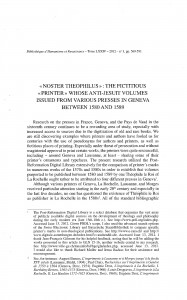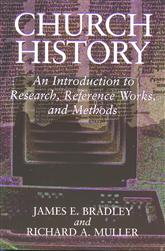 To close out the first academic year of the Junius Institute Colloquium series, Dr. Ted Van Raalte of the Canadian Reformed Theological Seminary gave us an inside look at the research method pursued in his discovery of the identities behind a pseudonymous publisher in the 1580s. His findings were published as “‘Noster Theophilus’: The Fictitious ‘Printer’ Whose Anti-Jesuit Volumes Issued from Various Presses in Geneva between 1580 and 1589,” Bibliothèque d’Humanisme et Renaissance 74, no. 3 (2012): 569-91.
To close out the first academic year of the Junius Institute Colloquium series, Dr. Ted Van Raalte of the Canadian Reformed Theological Seminary gave us an inside look at the research method pursued in his discovery of the identities behind a pseudonymous publisher in the 1580s. His findings were published as “‘Noster Theophilus’: The Fictitious ‘Printer’ Whose Anti-Jesuit Volumes Issued from Various Presses in Geneva between 1580 and 1589,” Bibliothèque d’Humanisme et Renaissance 74, no. 3 (2012): 569-91.
Here is a screencast of Dr. Van Raalte’s presentation from May 9, 2013, “Digitized Research Methods for Solving Pseudonymity: A New Discovery of Ten Volumes Printed under a Fictitious Name and Place in the 1580s.”
And for those with a deeper interest in these sorts of studies, the journal Quarendo has recently published an investigation of the identity of Spinoza’s printer.

